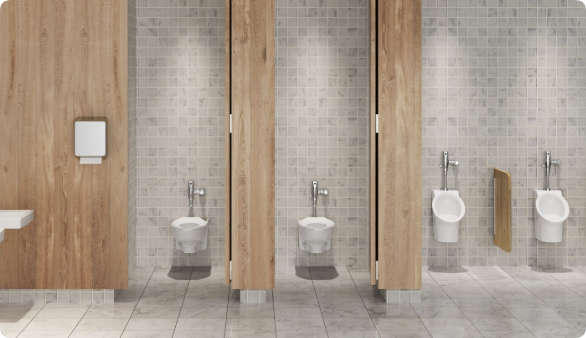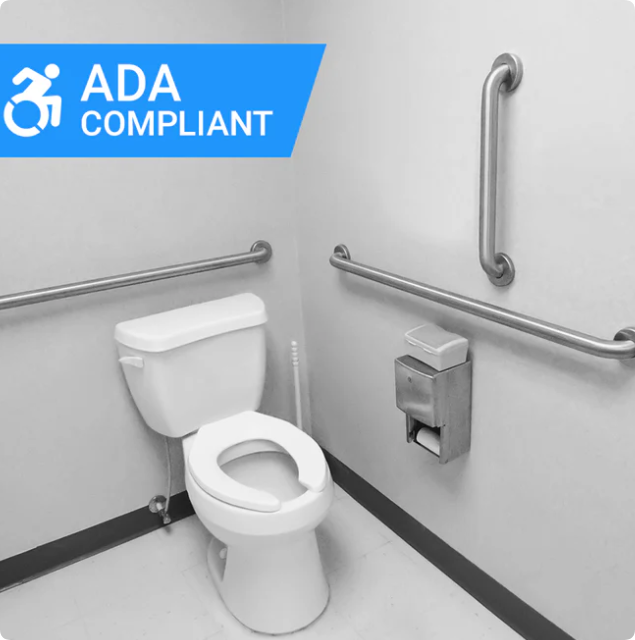In the world of plumbing, toilets serve as a fundamental part of any building, be it residential, commercial, or industrial. However, when we refer to a “commercial grade” toilet, we are talking about toilets that are specifically designed to meet the rigorous demands of high-traffic environments. These toilets are built for durability, performance, and efficiency. In this blog, we’ll explore what makes a toilet commercial grade, how it differs from residential models, and key considerations when selecting the right model for your business.

Key Characteristics of Commercial Grade Toilets
Commercial grade toilets are engineered for environments such as offices, hotels, airports, shopping malls, restaurants, and other public spaces that experience high volumes of traffic. To understand what sets them apart from their residential counterparts, let’s break down the key characteristics:
| Feature | Residential Toilet | Commercial Grade Toilet |
|---|---|---|
| Durability | Designed for light, occasional use | Built to withstand heavy daily usage, with stronger components |
| Flush Mechanism | Standard flush (1.28 – 1.6 gallons per flush) | Powerful flush (often 1.28 gallons or less, to save water) |
| Material | Ceramic or porcelain | Reinforced porcelain, sometimes with additional ceramic coatings |
| Design and Size | Standard size (round or elongated) | Larger bowl sizes for comfort and ease of use for all body types |
| Water Efficiency | May not prioritize water conservation | Water-saving designs that reduce water bills and support sustainability |
| Maintenance | Easy to clean with common household products | Designed for easier maintenance in commercial settings, often with self-cleaning or antimicrobial surfaces |
| Cost | Typically more affordable | Higher cost due to industrial-grade construction and durability |
| Warranty | Standard warranty (1-5 years) | Extended warranty, often covering up to 10 years |
1. Durability: Built to Last
One of the most important aspects of commercial grade toilets is their durability. These toilets are made to endure constant use, especially in high-traffic areas. Unlike residential toilets, which may crack or wear down with heavy use, commercial toilets are reinforced with additional layers of porcelain and sometimes ceramic coatings to make them resistant to chips, cracks, and stains.
The materials used in commercial toilets are often treated to be more resilient, which means they last longer, making them a more cost-effective option in the long term. This is especially important in environments where replacing toilets regularly would be disruptive and costly.
2. Powerful Flush and Water Efficiency
A major feature of commercial toilets is their flush performance. In high-traffic environments, toilets need to handle large volumes of waste and flush efficiently without clogging. Most commercial grade toilets come equipped with a powerful flush system that uses less water but still manages to flush waste effectively.
While residential toilets typically use between 1.28 and 1.6 gallons of water per flush (GPF), many commercial toilets are designed to use 1.28 GPF or less. This not only helps conserve water but also reduces the overall operational cost, making it more environmentally friendly in the long run.
Water-Efficiency Considerations:
- Water Conservation: Modern commercial toilets are designed with water-saving technologies that help reduce water consumption while still providing excellent flushing power.
- Maintenance Efficiency: A more efficient flush can reduce the need for regular maintenance and ensure toilets are always ready for use without clogging.
3. Size and Design: Comfort and Accessibility

Commercial grade toilets come in larger sizes to accommodate a wide range of body types and ensure comfort for all users. The elongated bowl design is more common in commercial models because it provides more seating space, making it more comfortable for extended use in public restrooms.
Additionally, commercial toilets are often designed with accessibility in mind. Many models are ADA-compliant, which means they meet the standards set by the Americans with Disabilities Act for accessible restrooms. This ensures that the toilet is comfortable and usable by people of all abilities.
4. Maintenance: Easy and Efficient
Maintenance is a critical factor when choosing a commercial toilet. In a busy commercial setting, frequent cleaning and maintenance are essential to ensure that the toilet remains in top condition. Commercial grade toilets are designed to be easier to clean, with features such as smooth, antimicrobial surfaces that resist the buildup of grime, bacteria, and other contaminants.
Some commercial toilets are even equipped with self-cleaning features, which help reduce the time and effort needed for regular cleaning. The smooth porcelain surfaces and seamless designs make these toilets easier to maintain in high-traffic environments, where cleanliness is essential.
5. Cost and Warranty
While commercial grade toilets come at a higher upfront cost than their residential counterparts, the investment is often justified by their longer lifespan and superior performance. The enhanced durability and water efficiency of these toilets mean that businesses will incur fewer replacement costs and maintenance expenses over time.
Commercial toilets also typically come with longer warranties than residential toilets. This extended warranty ensures peace of mind for business owners, knowing that the toilets are built to last and come with manufacturer support in case anything goes wrong.
6. ADA Compliance and Accessibility
For businesses operating in public spaces, ensuring compliance with the Americans with Disabilities Act (ADA) is essential. ADA-compliant toilets are designed with features like higher seating heights, larger clearances, and additional grab bars to make them accessible to individuals with disabilities. These toilets also meet specific plumbing standards to ensure proper accessibility and ease of use for all customers or employees.
In commercial settings like restaurants, malls, or airports, offering accessible restrooms can help ensure a positive customer experience and avoid potential legal issues related to ADA compliance.
7. Design Trends: Modern Commercial Toilets
While the main function of a toilet is to provide efficient and reliable service, design trends are also influencing the development of commercial grade toilets. Modern commercial toilets now come in sleek, minimalistic designs that can blend seamlessly with a wide range of interior styles. Manufacturers are focusing on creating visually appealing designs that match the aesthetics of high-end commercial spaces, such as hotels, restaurants, and corporate offices.
Some innovative design trends in commercial toilets include:
- Touchless Flush Systems: Many commercial toilets now come with touchless or automatic flush systems, which enhance hygiene by preventing the need to touch the flush handle.
- Smart Toilets: As technology continues to evolve, some commercial toilets are incorporating smart features such as temperature control, self-cleaning functions, and even water-saving modes.
8.What are the Differences Between Commercial Toilets & Residential Toilets?
Wondering if it’s possible to install a commercial toilet in your home? With its powerful bowl cleansing flush, a commercial toilet may seem to be a good alternative to a residential toilet. While these different toilets are fundamentally similar, there are some notable differences that you should consider before opting for a commercial over a residential toilet.
There are two types of commercial toilets available. Toilets that utilize a flushometer are often called spud bowls. Spud bowls use a flushometer valve instead of a tank to provide water to the bowl. Common in public settings like stadiums, airports, etc., these toilets require a 1” incoming supply line to function properly. The vast majority of residential settings have ½” incoming supply line size, making the flushometer type toilets unsuitable for these applications.
The other type of commercial toilet is a pressure-assist toilet. Similar in look to toilets used in residential applications, pressure-assist toilets include a tank, but incorporate a more powerful flushing mechanism within.
Conclusion
When selecting a toilet for a commercial setting, the decision goes beyond simply choosing the most affordable option. Commercial grade toilets are designed with durability, efficiency, and ease of maintenance in mind. They are built to handle heavy usage, conserve water, and provide comfort and accessibility for all users.
By understanding the key differences between residential and commercial toilets, business owners can make informed decisions that will ensure their facilities are equipped with toilets that meet the demands of high-traffic environments. Whether it’s for a busy restaurant, office building, or hotel, investing in commercial grade toilets will help provide a superior restroom experience for customers and employees alike, while saving money in the long term.
